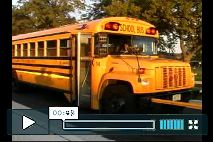A look at the Indigenous Connectivity Summit and the digital divide that impacts Indigenous Communities

By Maryam Sheikh
Have you heard of the term digital equity? The First Nations Technology Council defines it as a state in which all Indigenous peoples, communities, and Nations are fully equipped to effectively access and use technology in order to contribute and thrive in our digital society while preserving self-determination. However, the fight for digital equity is more than just access to technology and the Internet; it also includes influence over the direction of technology and its impacts on society. Digital equity is a prerequisite for innovation, self-governance, entrepreneurship, and more.
Not only is Internet access a basic right for Indigenous communities, it is also a tool for cultural survival. It offers access to Indigenous languages, traditional stories, skill building, interaction with other community members, education, healthcare, and sharing stories. Furthermore, it can be used as a platform for reconciliation between Indigenous and non-Indigenous peoples to take place through relationship-building via community events and learning opportunities.
The digital divide has become even more of a pressing issue in the midst and aftermath of the pandemic as life, including access to work, education, healthcare services, and more has shifted online. The government has failed to sufficiently invest in sustainable infrastructure; this is related to a long history of colonial practices that have failed to recognize and respect Indigenous rights.
So, what is next? There is a need for strategic planning, community leadership, and the inclusion of Indigenous voices in solution creation. There is already great work being done as Indigenous community members and other stakeholders come together to plan for the future.
For instance, the annual Indigenous Connectivity Summit brings together Indigenous leaders, community members, community network operators, Internet service providers, researchers, and policymakers with the common goal of connecting Indigenous communities to fast, affordable and sustainable Internet. The 2022 Summit was hosted by the newly formed Indigenous Connectivity Institute, marking the transition to a truly Indigenous-led event.
The 2022 Summit was held in Winnipeg, Manitoba and brought together more than 60 experts and advocates working to connect Indigenous communities as well as over 600 online participants. A recap of the event highlighted that there appears to be an “unprecedented level of commitment from governments, the private sector, and the philanthropic community to address the connectivity gap” coming out of the pandemic. As such, 2022’s delegates focused on translating that energy into lasting action through discussions on broadband mapping, spectrum sovereignty, access to funding, and building off-grid community-run broadband networks.
Leading up to the event, participants were invited to join two training tracks. These sessions provided foundations for the in-depth conversations that took place during the Summit and focused on policy and advocacy training as well as technical community networks training.
Attendees also brainstormed and developed five calls to action, working with pre-existing documents from past summits. The calls to action center around building participatory and inclusive policy consultation and funding processes, rethinking approaches to connectivity, holding governments and industry accountable, recognizing Indigenous rights to spectrum, and developing an Indigenous workforce in networking. The document is available here and includes more information on how to help; I’d highly encourage you to take a read through it and determine what part you can play in ending this divide.





Leave a comment!